Text: Marcus Ahlers | Section: Articles by Artists
Abstract: Marcus Ahlers works as a free artist on the one hand. On the other, he is engaged in the field of science; his professional occupation is in the realm of engineering. He is fascinated, both on a scientific and artistic level, by the connections between microscopic chemical structures and their macroscopic influences on society. The scientist as well as the artist deals with problems of building technology. Within this context, his interest for systemic structures correlates to his interest for the interaction between humans and their surroundings.
According to the terminology of the online journal, I am on the border between science and art: on one hand I am a working artist, and on the other, active in the sciences as a participant in a master’s program. I would like to describe the stages of development leading to this state. I first received a master’s degree (MFA) from the Maryland Institute College of Art in Baltimore, Maryland (USA), in a program focused on sculpture. I then came to Berlin with a Fulbright grant in 2002. After working as an artist for several years, I started on a second course of study in engineering at the Technical University Berlin in 2009. I learned the mathematical and scientific foundations for energy transformations in the bachelor’s program Energy and Process Technology. In the following master’s program, Energy Systems for Buildings, I learned to apply these theories to buildings.
I was already interested in the sciences before starting with the second course of study. Courses that I visited as part of an interdisciplinary bachelor’s degree, which I completed before the MFA degree, contributed to the development of these interests. In one course, for example, we examined the chemical structures of plastics emerging in the 70’s and their effects on society. I was fascinated by the connections between the microscopic chemical structures and their macroscopic influences on society. These interests later became evident in my creative work as can be seen in the following example from 2003.
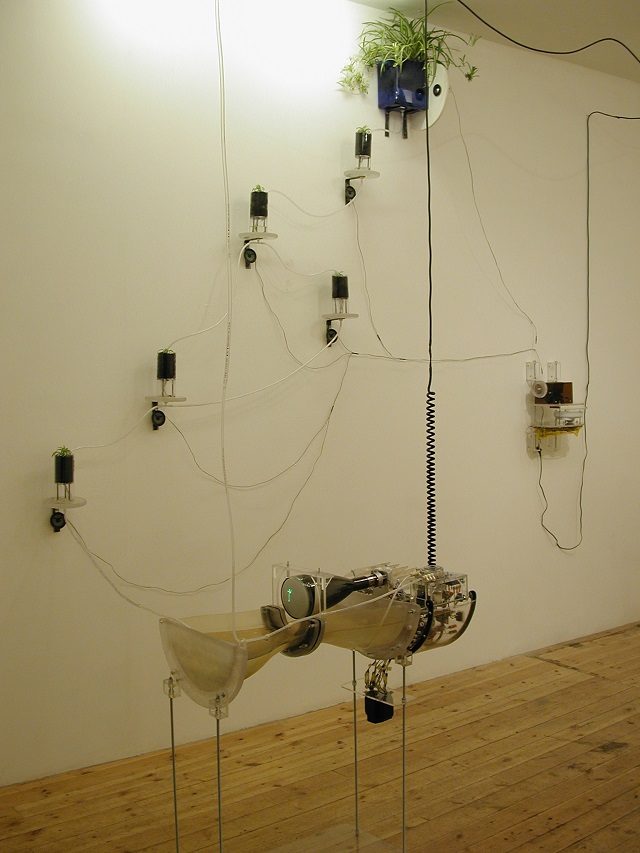
The installation Frequency examined various contexts of the wave form: radios received signals and broadcast music for plants while the electrical current was made visible on an oscilloscope. Small waves were also visible on the surface of the water in the reservoir of the watering system.
The desire to establish a better scientific foundation for my creative practice also informed my decision to pursue the second course of study. The further decision of pursuing a master’s degree in the area of building technology can also be traced back to earlier explorations in this area in my artistic process. The works Forced Air Humidifier and Heater shown in figure 2 serve as examples of early inclinations towards the theme of building technology in my artistic process.
In Forced Air Humidifier (figure 2, left), a form similar to that of the human body was connected to the ventilation system of the building. The transparent form on the left side of the image was a hand sewn vinyl duct extending from the ventilation outlet near the ceiling. The air flowed through the pipes on the floor into the form resembling the human body. Parts from a coffee machine also created steam which the air stream then forced out of the form and into the room.
The installation Heater (figure 2, right) also utilized the functioning ventilation system of the building. In this case, warm water from the building’s network flowed through the form, so that the temperature of the exiting air was slightly higher than that of the surrounding room air.
Both these installations also show a further principle which informs my creative work. My interest for the concept “System” as a collection of interacting factors mentally separated from the surroundings was prevalent in my thinking during the time I was in the first master’s program and during the first years I was in Berlin. Through my creative work, I developed a bivalent consideration of human existence. On one hand, I saw the human as a centralized autonomous agent, yet simultaneously also as a decentralized node in a greater network of interacting agents. This decentralized view can also exist in cohesion with the concept “System” since subsystems can be interconnected and nested in order to form a decentralized overall system.
In this context, I was interested in systems in different scales functioning in similar ways, for example the parallel methods of functioning of the human circulatory and respiratory systems, water supply and ventilation in buildings and traffic systems in the urban environment. These interests can be seen both in the works shown in figure 2 as well as in Plumbing Intervention:

The installation Plumbing Intervention consisted of a form constructed from an altered wet suit which hung suspended in a room. Water from the building’s water supply system flowed through the form and exited the room by means of an existing drainage pipe. In this case, the focus was on the parallel modes of functionality of the human circulatory system and the water supply system of a building.
The intensive exploration of systems led to the integration of the process electrolysis in my creative work in 2004, still before beginning the second course of study. According to this process, a small voltage is applied between two electrodes positioned in a fluid, which causes an electrical current to flow through the fluid. The current splits the molecules of the fluid, which in my case is usually water or saltwater, causes bubbles to rise from the electrodes and slowly changes the color and consistency of the fluid itself. Figure 4 shows a detail of the first sculpture I made using the process electrolysis.
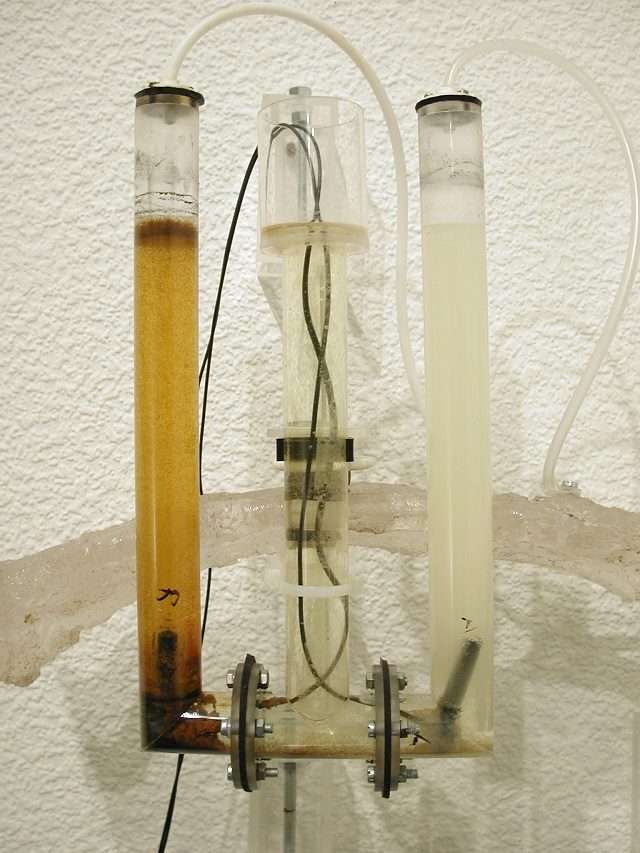
I would like to describe this developmental step to the process electrolysis more clearly. My work with the concept “System” led to an examination of the interaction between the human and its environment. The sensory organs located on the outer perimeter of the human system serve to collect information which is then passed on to the neurological network through a series of electrochemical impulses. Simultaneously, the material environment surrounding the human also exists as a collection of molecules whose characteristics are determined by electrochemical forces among and within the individual atoms. In this way, I understand the human as a part on an electrical continuum which connects us with one another and with our surroundings. Considerations regarding these aspects of human existence and its interaction with the rest of the world led me to introduce the process electrolysis to my creative process, seeing it as a metaphor for the electrochemical impulses responsible for the passing of information in the neurological network and the energetic dynamic of the greater network of the environment.
My work with the process electrolysis unintentionally caused me to more closely examine the concept “Energy” which had barely been present in my earlier work. The resulting creative energy-studies were another developmental step towards the second degree program.
The connection between my artistic work and the sciences was strengthened by this second degree program. This can be seen in the increase in mathematical methodologies and the integration of new technologies in my art. An example of these technologies is the use of resistance wire to generate heat in sculptures. The second course of study also contributed to a further development in the content of my creative work. The concept of the human as a node further developed to encompass considerations of the interactions of energy, material, time, space, and information. The concepts energy, time and information are currently especially prevalent since they are new to the underlying conceptual framework.
The influence of the two courses of study I have been able to pursue enabled a bivalent view of human existence: both from the perspectives of the arts and the sciences. I am convinced that these diverse perspectives in fact complement one another. This view has become a driving force in my creative work.
The concept “System” often receives critique from artists and those active in the humanities in general because it fails to recognize the synergetic effects which result when systems are joined together as is the case in the real world. It is claimed that this approach is flawed since the result from a system that is created by connecting a series of subsystems is determined merely as a type of sum of the results from the individual subsystems and fails to recognize the unforeseen interactions among the connected subsystems. Yet this critique is unfounded. Both views (the one based on decoupling and the one focusing on the holistic consideration of synergetic effects) should be understood as complementary. The concept of the system is crucial for the sciences and it was also my interest in system theory which led me to pursue the second course of study.
The fundamental bivalent central/decentral or node/system view manifests itself in two different ways in my creative work. In one case, I am pursuing a philosophical study of human existence, but also a more pragmatic and critical examination of current societal problems. I believe that a shift in the collective consciousness away from the I-oriented view and towards a decentralized view of a collective existence is urgently needed and encourage development in this direction. The following images of selected works and the accompanying texts serve as further examples of these two branches of my creative work.
Further information is also available on my website www.marcusahlers.com.
This piece shows the average daily temperatures (T) and values for the relative humidity (RH) in Berlin for every day in April 2014. The art work was created in 2016. The 30 temperatures are represented by the color scale on the back sides of the folded pieces of paper. The values for the relative humidity are shown by the color scale of the cracked surfaces on the front sides. Copper carbonate and copper oxide were used as pigments on the front sides. The blue-green copper carbonate was created with the process electrolysis in water with copper electrodes. The black copper oxide was created by boiling some of the copper carbonate water mixture. The cracks in the pigment on the front sides of the paper resulted during the drying process and serve to show the end result of a stochastic process.
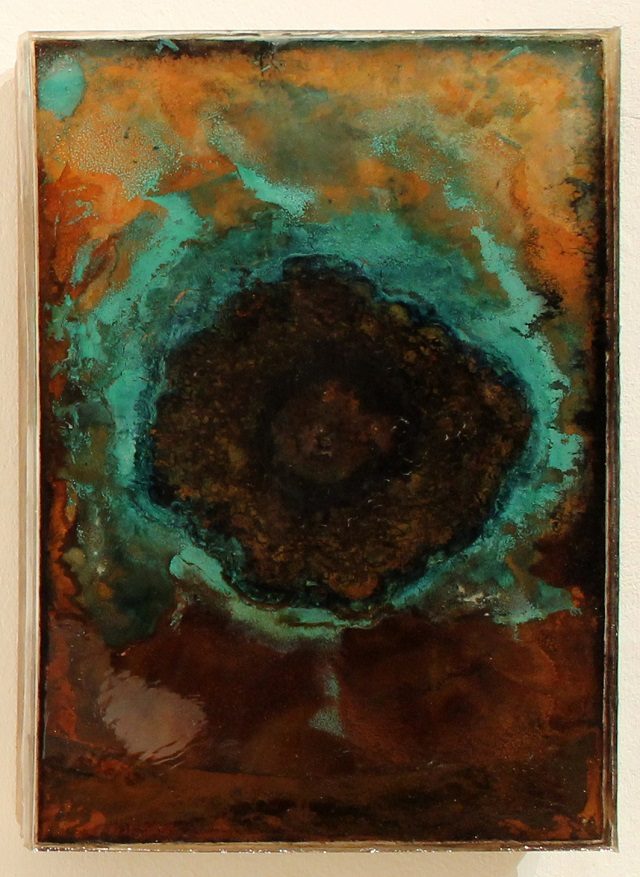
This work shows the end result of an electrochemical process. A copper foil was glued to the surface of the wood and a smaller piece of steel foil with a concave parabolic curve added at one end. A copper rod was placed in a hole at the focal point of the parabolic curve. A hole in the copper foil ensures that there was no direct contact between the foil and the rod. The copper and steel foils served as the anodes for the electrolysis reaction and the copper rod as the cathode. Tap water was added as an electrolyte and table salt periodically added along the perimeter as the piece developed. Colored substances developed over a time frame of about a week until the water was completely evaporated and the current could no longer flow between the electrodes. As the last step, epoxy resin was then poured over the surface.
Plastic parts from an orange stool and a table served as the point of departure for this sculpture. Resistance heating wire was embedded in the horizontal surfaces aligned with the upper edges of the orange form. The heat emitted by the resistance wire raised the temperature of the saltwater in the vessel. An electrical current flowed through the saltwater between the two electrodes thereby causing the process electrolysis to take place.
The housing of an old sewing machine served as the point of departure for this sculpture. The forms create a volume which is partially filled with a citric acid solution. The citric acid increased the electrical conductivity of the liquid and caused the liquid to turn green after a few weeks.
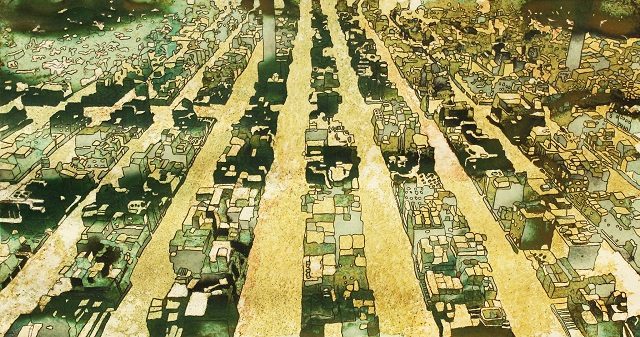
This work was based on an image from the media showing the interior space of a warehouse used for storing goods before they are sent to consumers. The copper carbonate was produced by means of water electrolysis with copper electrodes and the copper oxide was then created by boiling some of the copper carbonate water mixture. The composition addresses the phenomenon of planned obsolescence (according to which products are intentionally produced with a shorter lifespan than technically possible in order to encourage the purchase of new products) and its effects on the environment.

This image is based on a media photograph showing a farm in the southwestern part of the United States. Water which was originally used for agricultural purposes was diverted in order to accommodate the needs of nearby cities. The farmers were paid to not grow food and the amount they received was greater than what they had previously earned form the sales of agricultural products. This piece addresses the growing crisis associated with the scarcity of fresh water.
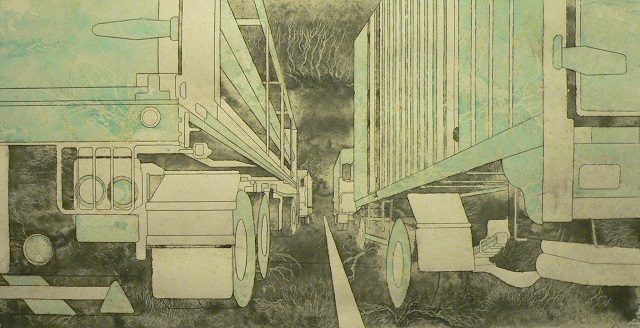
This image is based on media photograph showing trucks in a traffic jam on the Beijing-Zhangjiakou-Highway in China. This extreme traffic jam resulted in August 2010 as a result of an infrastructure unable to sufficiently handle the increased quantities of coal being transported in order to cover the country’s growing energy demand. The traffic jam increased in severity until it took vehicles five days to travel the distance which usually took one hour.
This piece is part of a series in which the composition is significantly influenced by one-point perspective (the representation of human perception according to a geometrical structure used to show depth on a two-dimensional surface). This mode of representation focusing on the individual is juxtaposed by the view of all living things existing as part of an interconnected network, communicated through the application of pigments over the entire surface of the piece. This full-surface application is achieved by masking portions of the image that are not intended to receive the particular color. This process results in unplanned patterns forming on the surface as the water evaporates. These patterns extend beyond the borders of the forms creating the image. The blue-green copper carbonate was produced by means of electrolysis in water with copper electrodes. The grey copper oxide was produced by boiling some of the water copper carbonate mixture.
All works and copyrights: Marcus Ahlers.
Translation: Marcus Ahlers.
How to cite this article
Marcus Ahlers (2016): Marcus Ahlers: System and Synergy. w/k–Between Science & Art Journal. https://doi.org/10.55597/e1669
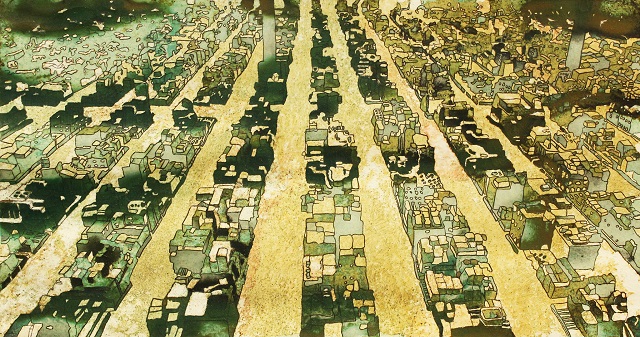


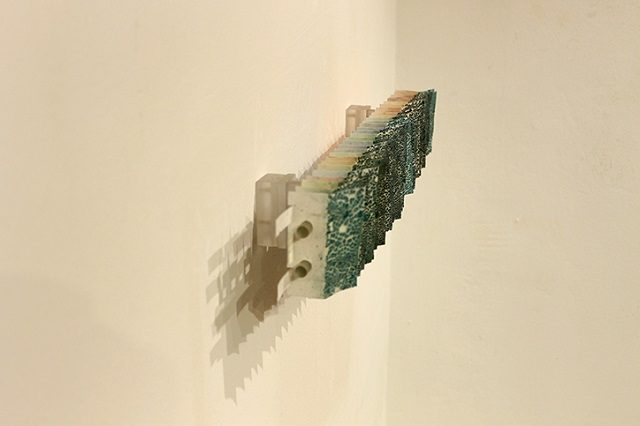
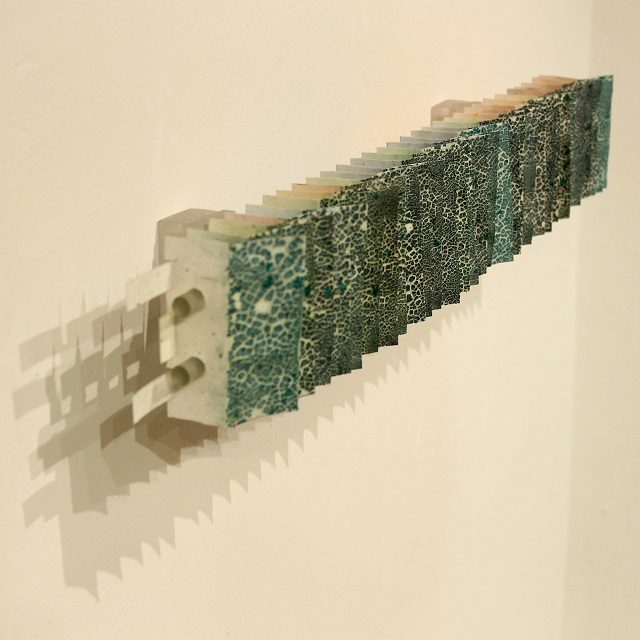


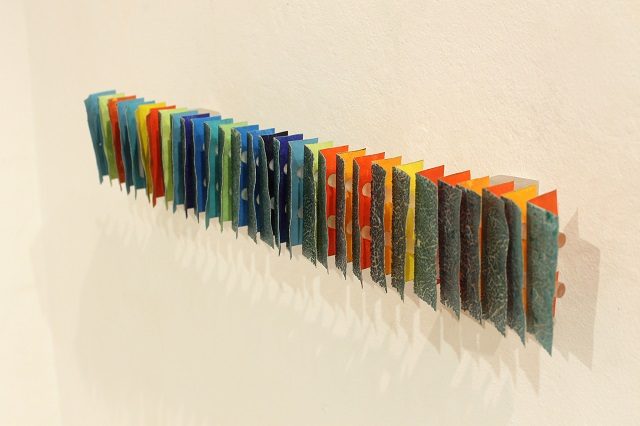
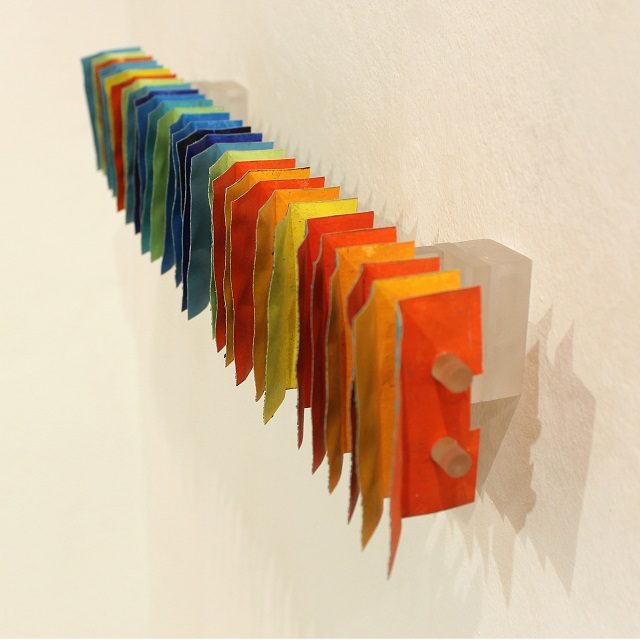


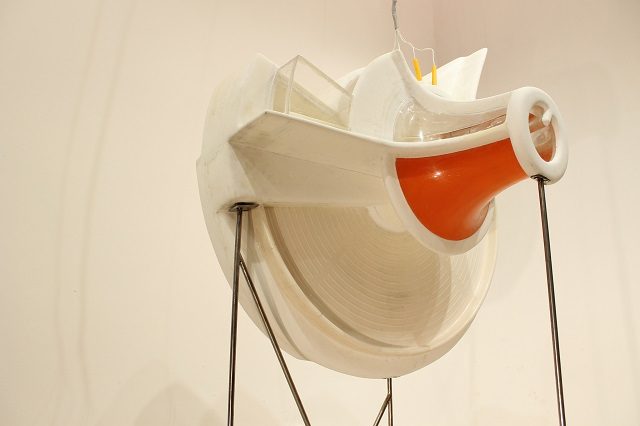

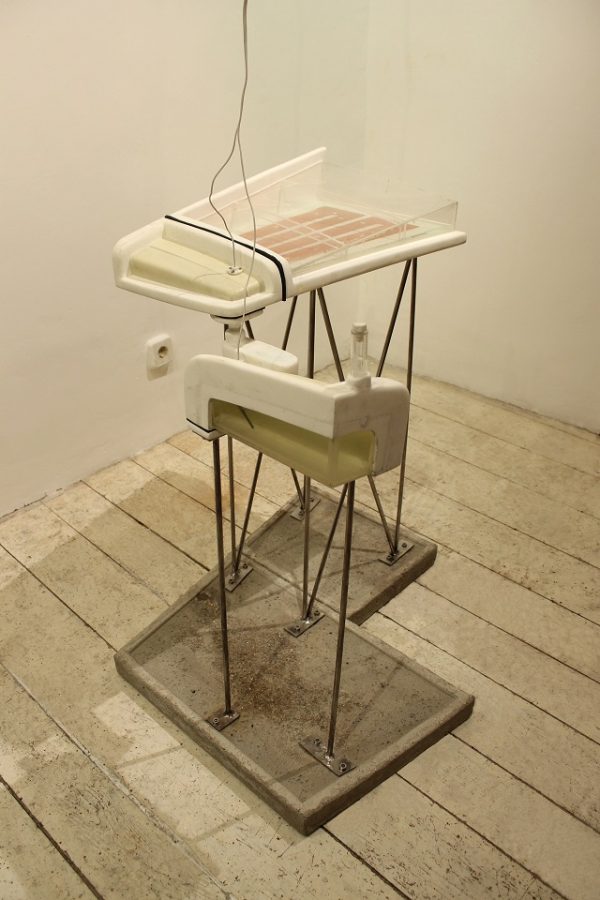
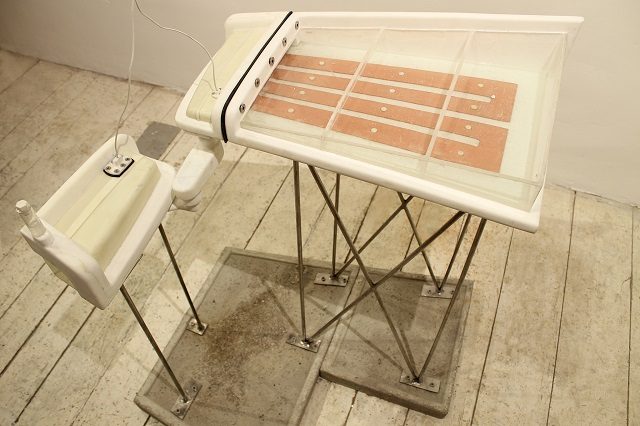
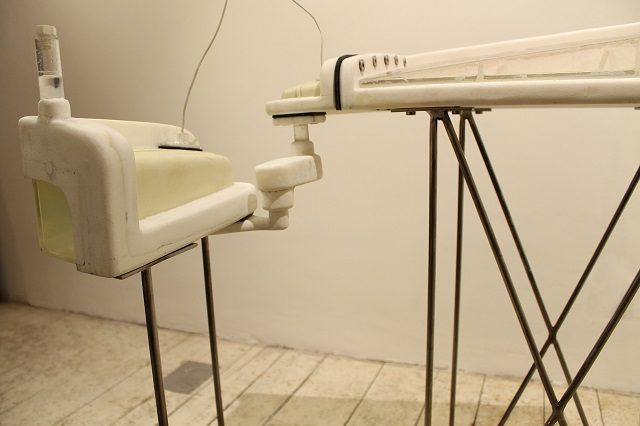
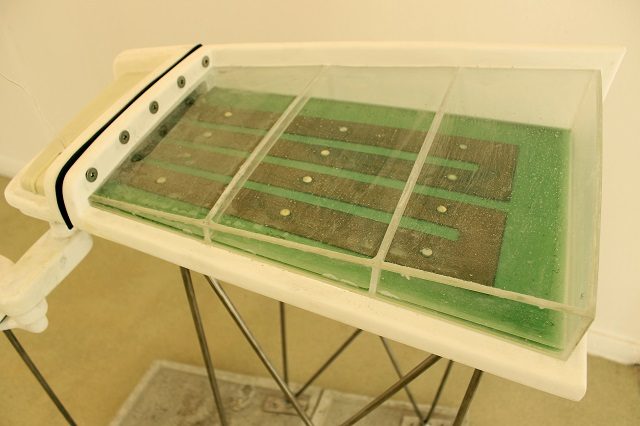

Be First to Comment